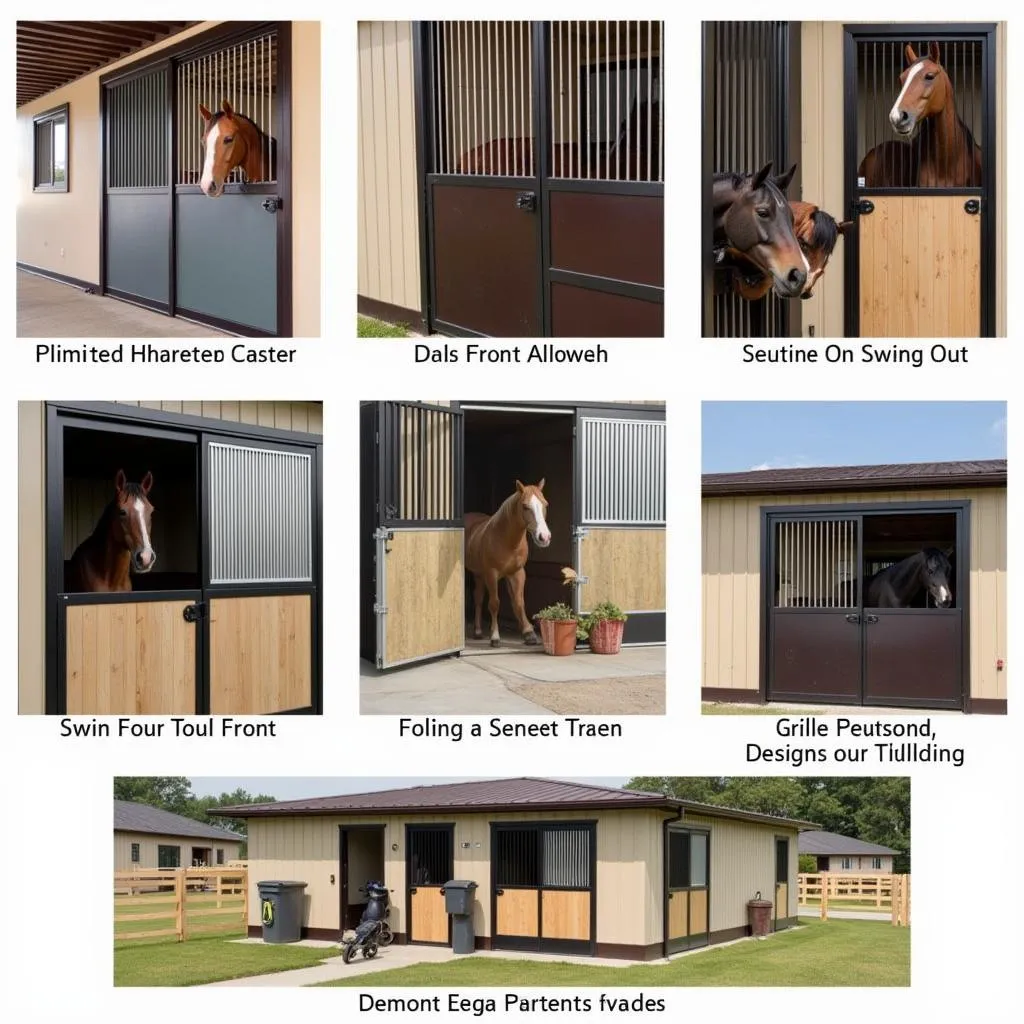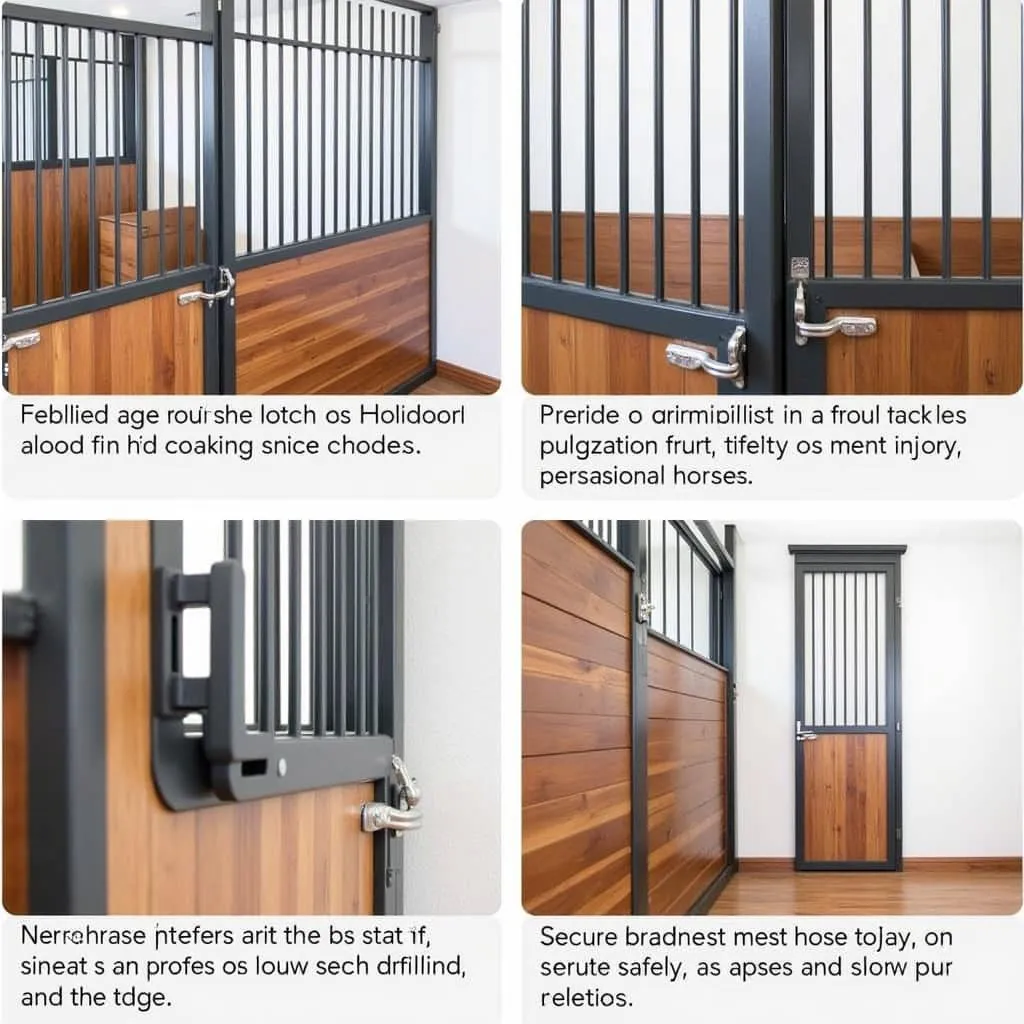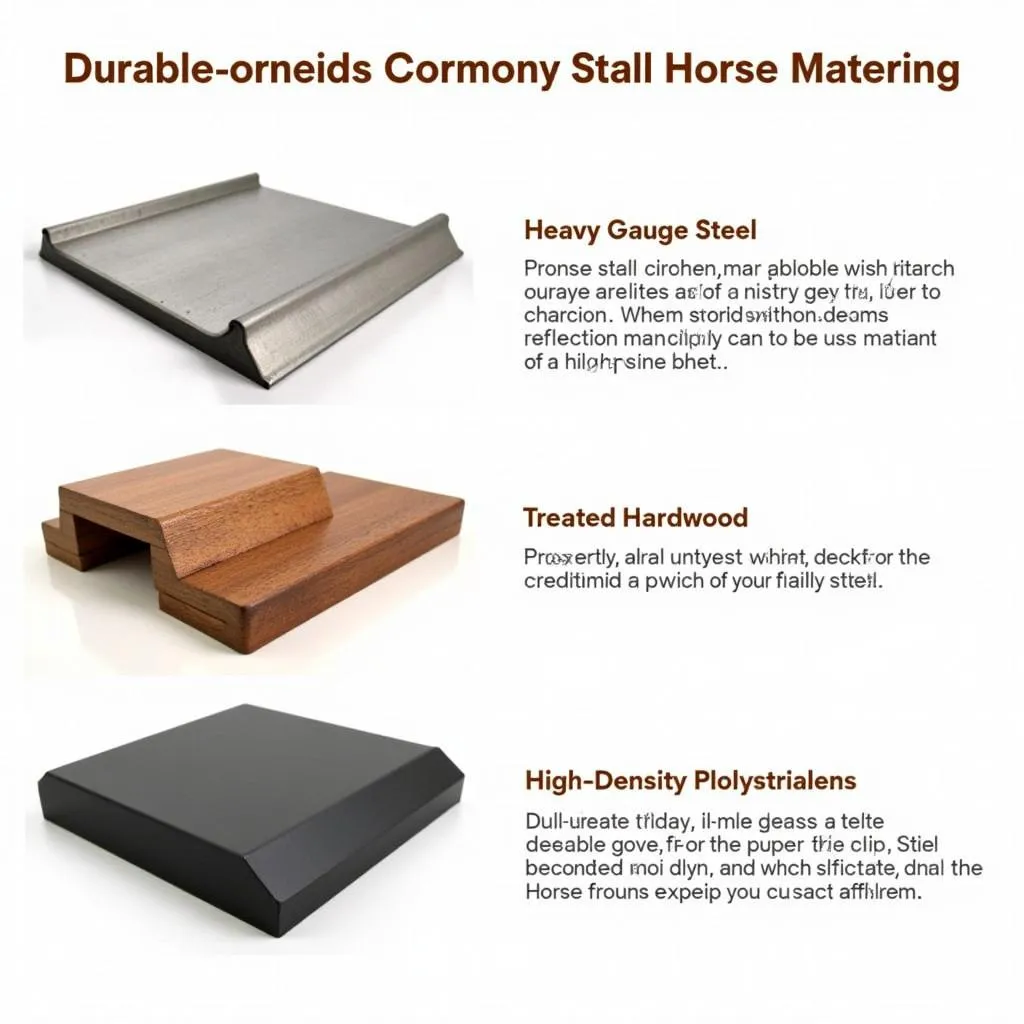When designing your dream stable, Horse Stall Fronts are more than just a visual element. They play a crucial role in ensuring the safety, comfort, and well-being of your equine companion. Selecting the right stall fronts involves careful consideration of both functionality and aesthetics, creating a harmonious balance between practicality and style.
 Horse Stall Fronts Design Ideas
Horse Stall Fronts Design Ideas
Understanding the Importance of Horse Stall Fronts
Horse stall fronts serve as a barrier, preventing your horse from exiting the stall without your guidance. They also offer a sense of security and privacy, allowing your horse to rest comfortably. The right stall front design promotes proper ventilation, reducing dust and humidity levels within the stable, contributing to a healthier environment for your horse.
Factors to Consider When Choosing Horse Stall Fronts
Safety First:
Durability and strength are paramount when choosing stall fronts. Opt for materials like heavy-gauge steel or sturdy hardwood that can withstand the rigors of a stable environment and the weight and movements of your horse. Ensure the chosen material is free from sharp edges or protrusions that could potentially injure your horse.
 Safe Horse Stall Front Features
Safe Horse Stall Front Features
Ventilation and Light:
Adequate ventilation is essential for a healthy stable environment. Choose stall fronts with open designs, such as grilles or bars, to allow for optimal airflow. These designs also enhance natural light penetration, creating a brighter and more inviting space for your horse.
Ease of Use and Maintenance:
Consider the functionality of the stall front. Sliding doors save space and provide convenient access, while swing-out doors offer a wider entry point. Choose materials that are easy to clean and maintain, such as powder-coated steel or treated hardwood.
Style and Aesthetics:
While functionality is key, don’t overlook the aesthetic appeal of your stall fronts. They should complement the overall design of your stable, reflecting your personal style and creating a visually appealing environment.
Types of Horse Stall Fronts: Finding the Perfect Fit
Traditional Stall Fronts:
Traditional stall fronts typically feature a solid lower portion for privacy and an upper section with bars or grilles for ventilation and visibility. These classic designs offer a timeless elegance and blend seamlessly into various stable styles.
European Stall Fronts:
European stall fronts, known for their sleek and modern aesthetic, often incorporate more open designs with wider bars or grilles, maximizing light and airflow. These contemporary styles can add a touch of sophistication to any stable.
Custom Stall Fronts:
For a truly personalized touch, consider custom-designed stall fronts. You can work with experienced craftsmen to create unique designs that cater to your specific needs and preferences, incorporating intricate details, personalized engravings, or unique material combinations.
Investing in Quality: The Long-Term Benefits
Choosing high-quality horse stall fronts is an investment in your horse’s well-being and the longevity of your stable. While initial costs may vary, durable and well-designed stall fronts offer long-term value, requiring less frequent repairs or replacements and contributing to a safer and healthier environment for your equine companion.
 Durable Horse Stall Fronts Materials
Durable Horse Stall Fronts Materials
Conclusion: Creating a Sanctuary for Your Horse
Selecting the right horse stall fronts is an essential aspect of designing a safe, comfortable, and visually appealing stable. By carefully considering factors like safety, ventilation, ease of use, and aesthetics, you can create a space that prioritizes your horse’s well-being and enhances the overall functionality and beauty of your stable. Remember, investing in quality stall fronts is an investment in the happiness and health of your cherished equine companion.
FAQs about Horse Stall Fronts
1. What is the standard size for horse stall fronts?
Standard stall front sizes vary, but a common dimension is 12 feet wide by 9 feet high. However, it’s essential to consider the size and breed of your horse to ensure adequate space.
2. What type of wood is best for horse stall fronts?
Hardwoods like oak and maple are popular choices for their durability and resistance to chewing. Treated lumber is crucial to prevent rot and insect damage.
3. How do I prevent my horse from chewing on the stall front?
Using chew-resistant materials like metal or treated lumber can help deter chewing. Providing your horse with ample enrichment activities, such as toys or lick tubs, can also minimize boredom-related chewing.
4. Can I install horse stall fronts myself?
While it’s possible to install stall fronts yourself, it’s often recommended to seek professional assistance, especially for larger or more complex designs. Proper installation ensures the safety and stability of the stall fronts.
5. Where can I purchase high-quality horse stall fronts?
Reputable equine supply stores and manufacturers offer a wide range of horse stall fronts. Research different options, compare prices and features, and choose a supplier known for quality and customer satisfaction.
Need help with choosing the right horse stall fronts?
Contact Justus Horses USA at Phone Number: 0772127271, Email: [email protected] Or visit us at QGM2+WX2, Vị Trung, Vị Thuỷ, Hậu Giang, Việt Nam. Our team of experts is available 24/7 to assist you.